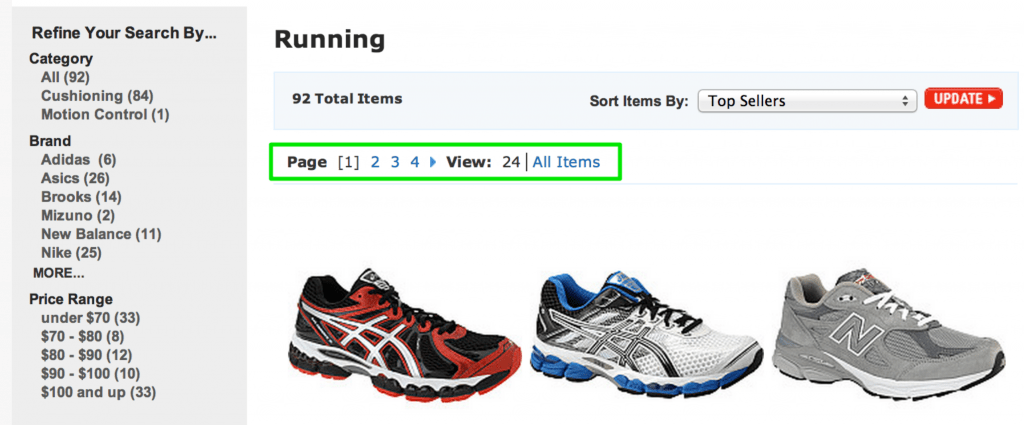
5 Sure-fire Ways To Do SEO Ecommerce The Right Way
Opportunities with SEO ecommerce have always seemed to be plentiful especially since online sales in the U.S. have been doubling every five years. In fact, the U.S. Census Bureau just released the Quarterly Retail E-Commerce Sales report for Q1 2014, which reveals that this expansive growth trend is continuing.
Promoting and selling products online may seem fairly straightforward to the general public. However, most seasoned brick-and-mortar business owners, start-ups and basement retailers would agree that building a successful online business is more difficult than it seems.
Most online retailers face a multitude of challenges with product sourcing, scalability and steep competition from retail behemoths like Amazon (by the way, did you hear about Alibaba’s IPO?). On top of all this, there’s the obvious challenge of making your site visible to users in search results.
5 Actionable SEO Ecommerce Tips
To help traverse these challenges, here are some actionable SEO ecommerce steps you can take to improve your site visibility in organic and paid search:
- Get to know your CMS
- Write unique product descriptions
- Use unique images
- Have a clear canonical strategy
- Implement rich snippets
1.) Get to Know Your CMS
Whatever platform you’re using, whether it be Magento, Zen Cart, Shopify, osCommerce, PrestaShop, Jigoshop (there are dozens more), you need to understand that it is NOT automatically optimized for search engines.
SEO friendly does not mean SEO ready
Check all the fundamentals including URL structure, breadcrumbs, canonicalization, image handling and independent meta data handling (for example, allowing independent editing of page titles and H1s, is key).
2.) Write Unique Product Descriptions
Even with customized content management systems, there are inherent issues with unintentional external duplicate content; this is especially true if you are drop shipping or don’t have exclusive rights to your products.
You can do a quick search in Google using some of your product descriptions (wrapped in quotes). If you see more than 1,000 sites indexed, you have considerable competition. Why not revise your descriptions to describe your products in your own way? I know, it’s difficult to scale, but taking the time to write unique descriptive text will set your site above the crowd.
3.) Use Unique Images
After writing unique descriptions, you may be overwhelmed when it comes time to make your product images unique. Luckily, there are great tools that allow to do batch editing of image file names, extensions and resizing.
For example, if the supplier gives you product-img10012.png:
- Convert it to: descriptive-product-name-lg1.jpg
- Resize it to a slightly different size (even just 10px)
- Write descriptive and unique alt text for it
You’re now the proud owner of a ‘unique’ image that exists in no other site but your own.
4.) Have a Clear Canonical Strategy
Canonicalization may be a difficult concept to grasp but it’s really quite simple if you summarize it with the following principle:
Only one page should be the main focus of a particular keyword term
For example on a sporting goods site, there should only be one main category for golf clubs in a sporting goods store and that’s the only page which should rank for the search query “men’s golf clubs.” Otherwise, you’ll have hundreds of competitive pages, all vying for top placement of the keyword which causes ‘Googlebot confusion.’
Use the rel=”canonical” tag element for any page that is potentially causing duplicate pages. Most commonly this is needed on paginated content or multiple pages of products in the same category, sorted by pg1, pg2, size, color, etc. Ensure that the URL referenced in the canonical tag element is the main page you want to rank for that category’s keyword term. It’s interesting to note that even big brands can mess this up. For example, Sports Authority, has incorrect canonical tags in many categories (view source code here and search “canonical”).
5.) Implement Rich Snippets
Google, Bing, Yandex and Yahoo! all collaborated to standardize schemas to enhance online search. If you’re not using rich snippets such as schema.org, you’re missing out on a big opportunity. Simply put, you can add special markup to your product listings to provide additional data that shows up within search results including product pricing, reviews and more. Ultimately, the end goal of implementing rich snippets is to enhance click through and conversions.
In summary, it’s good to choose a popular CMS platform for your e-commerce objectives. However, it’s equally important to understand how search engines are viewing your content. With a SEO ecommerce strategy, you can take advantage of the tremendous continued growth trend in online sales and make your site even better than some of the biggest brands online.
Art Enke
Related Posts
IN THIS ARTICLE






